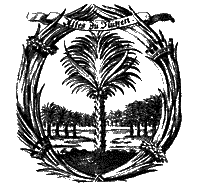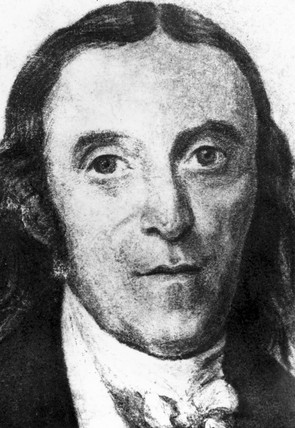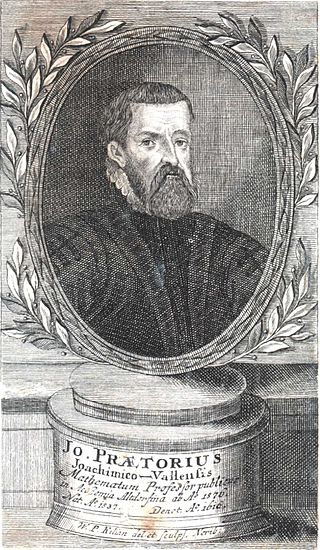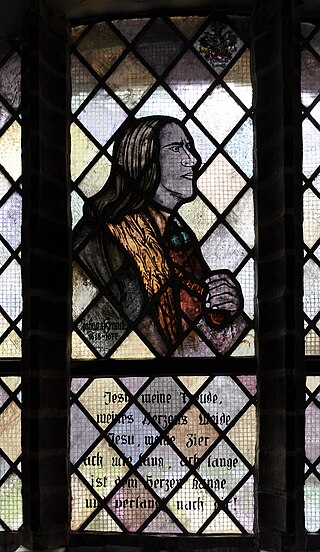Johann Nicolaus Bach was a German composer of the Baroque period.

The Fruitbearing Society was a German literary society founded in 1617 in Weimar by German scholars and nobility. Its aim was to standardize vernacular German and promote it as both a scholarly and literary language, after the pattern of the Accademia della Crusca in Florence and similar groups already thriving in Italy, followed in later years also in France (1635) and Britain.

Johann Salomo Christoph Schweigger was a German chemist, physicist, and professor of mathematics born in Erlangen.
Johann Christoph Altnickol, or Altnikol, was a German organist, bass singer, and composer. He was a student, copyist and son-in-law of Johann Sebastian Bach.

Johannes Praetorius or Johann Richter was a Bohemian German mathematician and astronomer.

Johann Fran(c)k was a German politician and a lyric poet and hymnist.

Johann Adam Klein was a German painter and engraver.
Maria Clara Eimmart, was a German astronomer, engraver and designer. She was the daughter and assistant of Georg Christoph Eimmart the Younger.

Johann Elias Ridinger was a German painter, engraver, draughtsman and publisher. He is considered one of the most famous German engravers of animals, particularly horses, hounds and hunting scenes.

Christoph Heinrich Kniep (1755–1825), was a German painter. He is renowned for accompanying Goethe in his Italian Journey to Naples, Paestum and Sicily, executing several drawings whilst there.

Nikolaus Herman was a German Lutheran cantor and teacher, creating numerous Protestant hymns. Some of them are contained in hymnals in several languages.
Franz Michael Leuchsenring was a German writer of the German Enlightenment.
Gottfried Wilhelm Sacer was a German jurist, poet, satirist and Protestant hymn writer. He worked as an advocate at the court of Wolfenbüttel. Johann Sebastian Bach used a stanza from his hymn "Gott fähret auf gen Himmel" to conclude his Ascension Oratorio. Another hymn, Jesu, meines Glaubens Zier, appears in the 1736 Schemelli Gesangbuch in a setting attributed to Bach.

Johann Georg Ebeling was a German composer who was born in Lüneburg and died in Stettin. Ebeling is known as editor and composer of hymns by Paul Gerhardt. He published in 1667 120 songs by Gerhardt, adding new melodies to many, writing the first melody for 26 of them, including "Die güldne Sonne voll Freud und Wonne" and "Du meine Seele singe". Several of his cantatas are extant.
Georg Lorenz Bauer was a German Lutheran Theologian, and writer on his subject.

Gustav Georg Zeltner was a Lutheran theologian. Zeltner wrote numerous theological and historical writings.

Christian Ferdinand Hartmann was a German portrait and Classical history painter.

Christian Ludwig von Hagedorn was a German art historian and collector, as well as an amateur engraver. He also served as a diplomat. His elder brother, Friedrich, was a well known poet.

Jonathan Friedrich Bahnmaier was a German Protestant theologian, university professor, and hymnwriter.

Philip Frederick Hiller was one of the most prolific hymn writers of the Evangelical Church of Southern Germany.














